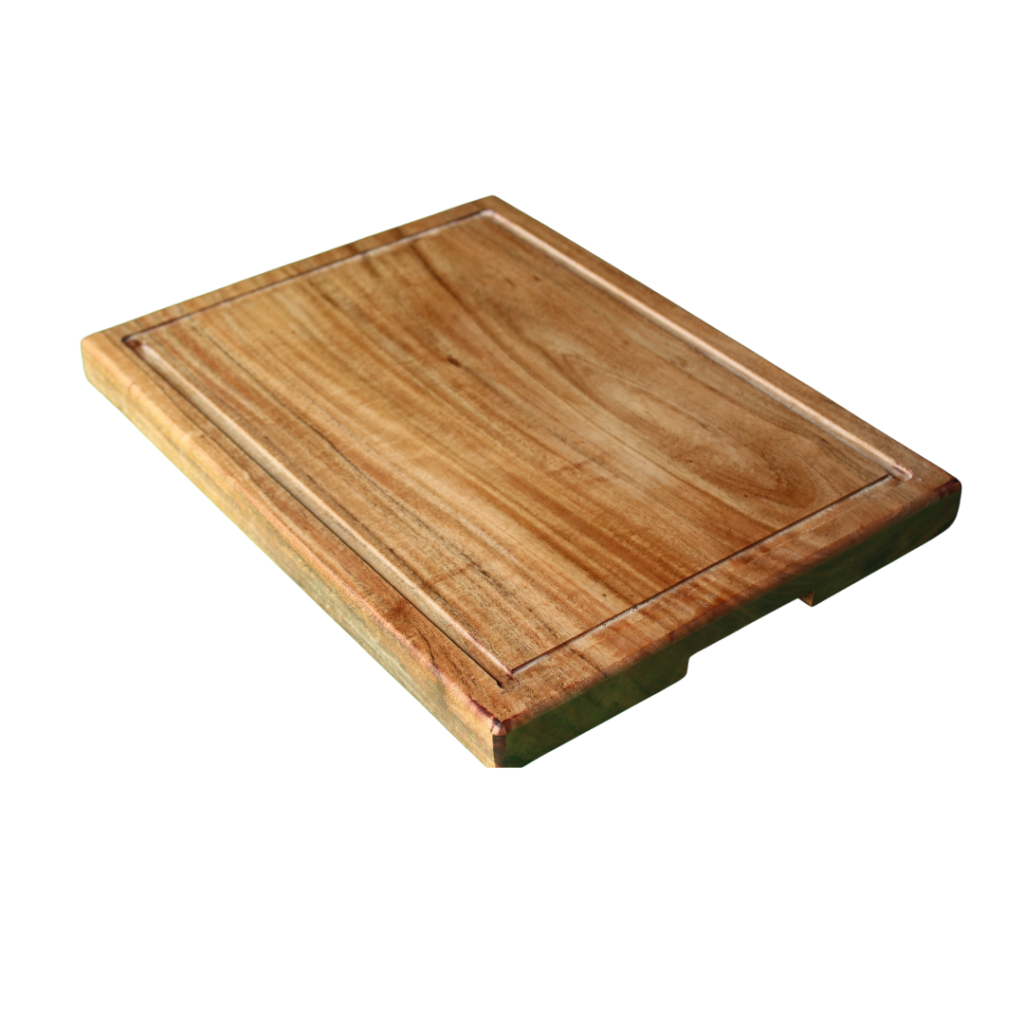Is Acacia Wood Good for Cutting Boards? A Comprehensive Guide

When it comes to choosing the perfect cutting board for your kitchen, the type of wood you select can make a big difference. Among the many options available, acacia wood has been gaining popularity — but is it really a good choice for cutting boards?
In this blog, we’ll take a deep dive into the pros, cons, care tips, and frequently asked questions about acacia wood cutting boards so you can make an informed decision.
🌳 What is Acacia Wood?
Acacia is a fast-growing hardwood native to Asia, Africa, and Australia. Known for its rich, deep color and beautiful grain patterns, acacia is widely used in furniture, flooring, and kitchenware. It’s also considered eco-friendly, thanks to its sustainability and quick regrowth rate.

✅ Why Acacia Wood is Good for Cutting Boards
Here’s why acacia wood is a solid choice for cutting boards:
1. Hard and Durable
Acacia wood scores around 1700 on the Janka hardness scale, making it harder than many popular woods like maple and bamboo. This means it resists dents and scratches — ideal for frequent chopping.
2. Water-Resistant
Thanks to its natural oils, acacia is less prone to water absorption, reducing the risk of warping and cracking over time.
3. Naturally Antibacterial
Acacia wood has natural antibacterial properties, which helps make your kitchen more hygienic, especially when handling raw meat or fish.
4. Eco-Friendly
Acacia trees grow quickly and don’t require heavy pesticide use. If sustainably sourced, they’re a great option for environmentally conscious consumers.
5. Aesthetic Appeal
The rich, warm tones and striking grain patterns make acacia boards not only functional but also a beautiful addition to any kitchen.
⚠️ Potential Drawbacks of Acacia Wood Cutting Boards
While acacia is a great choice overall, it’s not perfect. Here are a few things to consider:
1. Can Be Too Hard on Knives
Its hardness can dull knife blades faster than softer woods like walnut or cherry.
2. Inconsistent Quality
Acacia wood varies widely depending on the source. Poor-quality boards may crack or warp easily if not well-made.
3. Requires Regular Maintenance
To keep its water resistance and appearance, acacia boards should be oiled regularly with mineral oil or beeswax.
🛠️ How to Care for an Acacia Cutting Board
To get the most out of your acacia cutting board:
- Hand-wash only: Never put it in the dishwasher.
- Dry immediately: Don’t let it sit wet.
- Oil monthly: Use food-safe mineral oil or board cream.
- Avoid soaking: Long exposure to water can damage it.
- Use both sides: This helps keep the board from warping.
🤔 Acacia vs. Other Popular Cutting Board Woods
| Wood Type | Hardness (Janka) | Pros | Cons |
|---|---|---|---|
| Acacia | ~1700 | Durable, water-resistant, antibacterial | Can dull knives |
| Maple | ~1450 | Knife-friendly, durable | Needs more maintenance |
| Walnut | ~1000 | Very gentle on knives, attractive | Softer, can dent |
| Bamboo | ~1380 | Affordable, eco-friendly | Can be brittle and split |
🔍 Frequently Asked Questions
Q: Can I use acacia cutting boards for meat?
A: Yes! Acacia’s antibacterial and water-resistant qualities make it suitable for cutting raw meat. Just be sure to clean thoroughly after each use.
Q: Do acacia cutting boards stain easily?
A: They can stain if not sealed or oiled regularly, especially from highly pigmented foods like beets or turmeric.
Q: Is acacia wood food-safe?
A: Absolutely, as long as it’s untreated and sealed with food-safe oil.
🧠 Final Verdict: Is Acacia Wood Good for Cutting Boards?
Yes — acacia wood is an excellent choice for cutting boards, especially if you’re looking for durability, beauty, and a bit of natural resistance to moisture and bacteria. With proper care, an acacia cutting board can last for years and serve as both a functional and stylish kitchen tool.
✨ Pro Tip:
Looking for a combo of beauty and performance? Go for a thick, edge-grain acacia board with juice grooves for meat prep or a sleek paddle-style board for serving cheeses and charcuterie.
